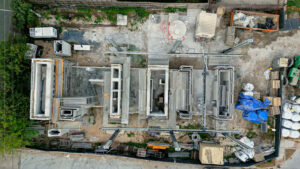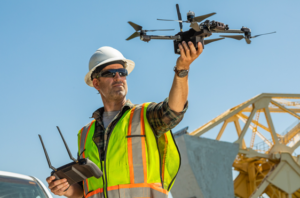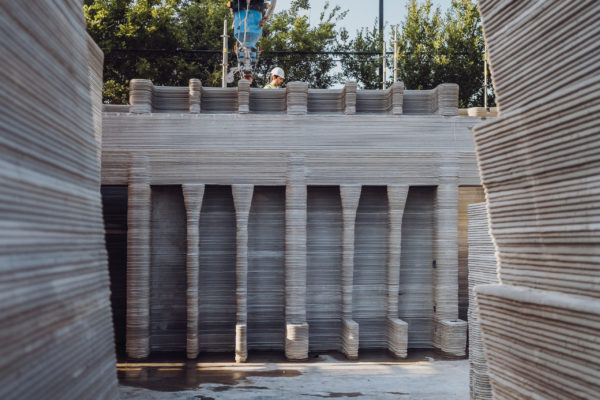Improved Safety and Risk Management
Construction sites are typically large and dangerous places. The use of drones has helped alleviate some of these dangers by capturing real-time aerial images and videos. This can help locate and even prevent hazards such as falls, collapsing structures, and machinery accidents. With the ability to perform inspections remotely in dangerous or hard-to-reach areas, for example drones can be used to inspect scaffolding, roofs, and bridges, workers can be removed from risk. They can also help to identify safety issues, such as unstable structures or potential hazards, that may not be visible from the ground.
Mapping and Surveying
Drones can accurately capture high-resolution aerial images and topographical data. The process of land surveying is centuries old, and traditionally land surveyors would have to manually measure and map the construction site. This is a labor-intensive and time-consuming process requiring incredible precision and accuracy. Surveying ensures that the work is carried out accurately, safely, and within legal boundaries. Drones equipped with high-resolution cameras and LIDAR can provide information necessary for the creation of topographical maps and 3D models, that help achieve effective planning and decision-making.
 Progress Monitoring
Progress Monitoring
Just like how drones can be used for real-time on-site safety monitoring, they can also enable real-time monitoring of construction progress. By capturing high-resolution images and videos, drones provide valuable data on the status of construction projects, such as the completion of different building phases, potential bottlenecks, and areas requiring immediate attention. Additionally, the real-time monitoring of progress can enable more efficient communication, better resource management, and prompt identification of any potential issues or delays.
Cost-Effectiveness
Due to the speed and efficiency at which drones can operate, drone usage can result in significant cost savings. For example, drones can perform tasks such as surveying, inspection, and progress monitoring more quickly and accurately than traditional methods, which can save time and reduce labor costs.
Marketing and Promotion
Simply put, high-quality aerial images and videos taken by drones can be used in marketing and promotional campaigns. These images can highlight unique features and generate interest in the project.
Client-Contractor Communication and On-Site Communication
By providing clients with real-time aerial image and video updates, companies can maintain strong relationships and enhance client satisfaction. Additionally, drones facilitate improved communication and collaboration among construction teams. Real-time imagery can be easily shared among stakeholders, such as architects, engineers, project managers, and others, ensuring everyone is receiving updates and working with accurate information.
Environmental Impact Assessment
Drones can provide imagery that can be used in environmental impact assessments and ensure that environmental standards and regulations are being met. This includes documenting things such as erosion control measures, storm water management, and wildlife protection efforts. This data can also help construction professionals develop mitigation strategies to minimize the environmental impact of their projects.
Overall Efficiency
Drone usage on a construction site can have a significant effect on overall efficiency. They can aid in equipment tracking, and site organization as well as reduce the number of on-site workers. Moreover, improved efficiency can help keep projects on schedule and can reduce costs related to delays. The faster and more precise collection of data that drones allow for can reduce time spent on preliminary works such as site inspection and surveying.
 Are Drones Replacing People?
Are Drones Replacing People?
Drones replacing human workers is a common concern when discussing drone usage in construction. Although at first glance it may appear that drones replace workers, upon further analysis most jobs drones “replace” are simply shifted. People are still needed to operate the drones, look through and analyze the drone footage, and work construction sites. Drones are being used to augment human capabilities and improve efficiency, safety, and accuracy in various construction-related tasks. They are a tool for human use, not a replacement. The use of drones, therefore, can reduce the need for certain types of labor, such as surveying, but it also creates new roles for drone operators and data analysts.
Conclusion
Drones have become a valuable tool in the construction sector. From marketing to on-site management, drone usage has many benefits. As technology advances the role of drones in construction and in everyday life is likely to expand. For now, drones should be embraced as a tool on construction sites, just like a crane, or even a hammer.






